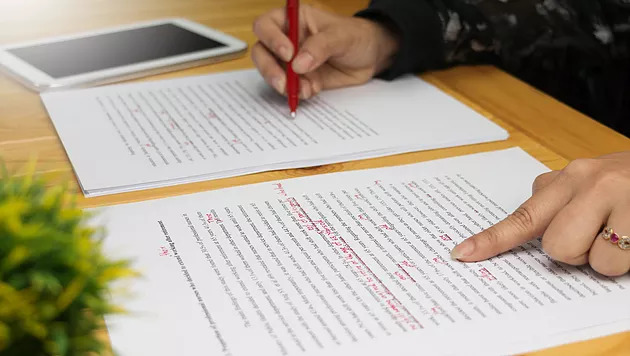How To Write A Winning Bid

Step 1: Understand the Opportunity
A winning bid starts with clarity. Review the tender documents thoroughly, and ask:
- What are the client’s priorities and pain points?
- Does this opportunity match our expertise and resources?
- Are the scope, criteria, and deadlines clear?
If anything is unclear, reach out to the client early — guesswork can lead to mistakes. By fully understanding the opportunity, you can tailor your bid to meet the client’s needs and expectations.
Step 2: Build the Right Team
A strong bid needs a strong team. Bring together:
- Subject Matter Experts (SMEs): For technical insights.
- Bid Writers: To create clear, client-focused responses.
- Bid Managers: To keep the process organised and on schedule.
Assign roles early and establish a single point of coordination. A cohesive team ensures your bid is accurate, persuasive, and delivered on time.
Step 3: Research Thoroughly
Research is the foundation of a winning bid. Focus on three key areas:
- The Client: Understand their goals, pain points, and recent projects.
- The Competition: Identify your differentiators and highlight them.
- Compliance: Ensure you meet all technical, legal, and financial criteria.
Use these insights to shape a strategy that aligns with the client’s needs and gives you an edge over competitors.
Step 4: Craft a Winning Narrative
A winning bid tells a story with the client at its center and your solution as the answer to their challenges. Start with a plan:
- What will we do? Define your solution clearly.
- How will we do it? Explain your approach and resources.
- Why is our way the best? Highlight the unique benefits of your approach.
Then, craft a narrative that connects:
- Show benefits over features — how your solution delivers value.
- Back claims with evidence — case studies, testimonials, and data.
- Keep it consistent — use a professional tone and clear structure.
With a well-planned and evidence-backed narrative, you’ll demonstrate why your solution is the best choice.
Step 5: Review, Refine, and Polish
Winning bids are rewritten, not just written. Think of it as 1% inspiration and 99% perspiration — or more accurately, 30% writing and 70% editing.
Start with a fast first draft, then focus on refining:
- Structure First: Ensure your bid flows logically and answers the client’s questions.
- Iterate for Impact: Refine for clarity, conciseness, and alignment with the client’s priorities.
- Check Compliance Throughout: Build compliance checks into every stage.
- Polish the Details: Fix errors, refine formatting, and ensure consistency.
Plan for multiple review rounds — each one strengthens your bid. Involve fresh perspectives to catch missed details and ensure your bid is as strong as it can be.
This process may feel labour-intensive, but it’s worth it. The difference between a good bid and a great one is often found in the extra effort you invest in refining it.
Step 6: Leverage Technology
Technology is changing the world around us – and how we write bids, tenders and proposals. The right tools can transform your bid process, saving time and improving results. AutogenAI helps you:
- Draft Smarter: Generate strong first drafts faster.
- Ensure Compliance: Streamline checks to avoid costly mistakes.
- Strengthen Evidence: Quickly retrieve case studies, testimonials, and data.
By streamlining repetitive tasks, AutogenAI lets your team focus on strategy and creativity. When competition is tight, technology like AutogenAI gives you the edge.
Winning Bids Through Focus and Innovation
Crafting a winning bid takes preparation, clarity, and persistence. By understanding the opportunity, building the right team, and using tools like AutogenAI, you can create bids that stand out.
Success is in the details — clear structure, strong evidence, and polished delivery. Every step matters when you’re aiming to win.
Ready to improve your bid writing? Discover how AutogenAI can help you win more work. Get in touch with our team today.
Frequently Asked Questions
1. What are the key steps in writing a winning bid?
The article outlines a six-step process:
- Understand the opportunity
- Build the right team
- Research thoroughly
- Craft a winning narrative
- Review, refine, and polish
- Leverage technology
2. Why is understanding the opportunity crucial?
Fully comprehending the client’s priorities, pain points, scope, criteria, and deadlines ensures that your bid is tailored to meet their needs and expectations.
3. Who should be on the bid team?
A strong bid team typically includes:
- Subject Matter Experts (SMEs)
- Bid Writers
- Bid Managers
Assigning roles early and establishing a single point of coordination helps in delivering a cohesive and timely bid.
4. How important is research in the bidding process?
Thorough research on the client, competition, and compliance requirements is foundational. It helps in identifying differentiators and aligning your strategy with the client’s needs.
5. What makes a winning narrative?
A compelling narrative:
- Defines your solution clearly
- Explains your approach and resources
- Highlights the unique benefits of your approach
It should focus on benefits over features and back claims with evidence like case studies and data.
6. How should the bid be reviewed and refined?
Start with a fast first draft, then focus on refining:
- Ensuring logical flow and compliance
- Refining for clarity and conciseness
- Polishing details like formatting and consistency
Multiple review rounds strengthen the bid.
7. What role does technology play in bid writing?
Leveraging technology, like AutogenAI, can automate repetitive tasks such as formatting and data entry, allowing bid teams to focus on strategic content creation


